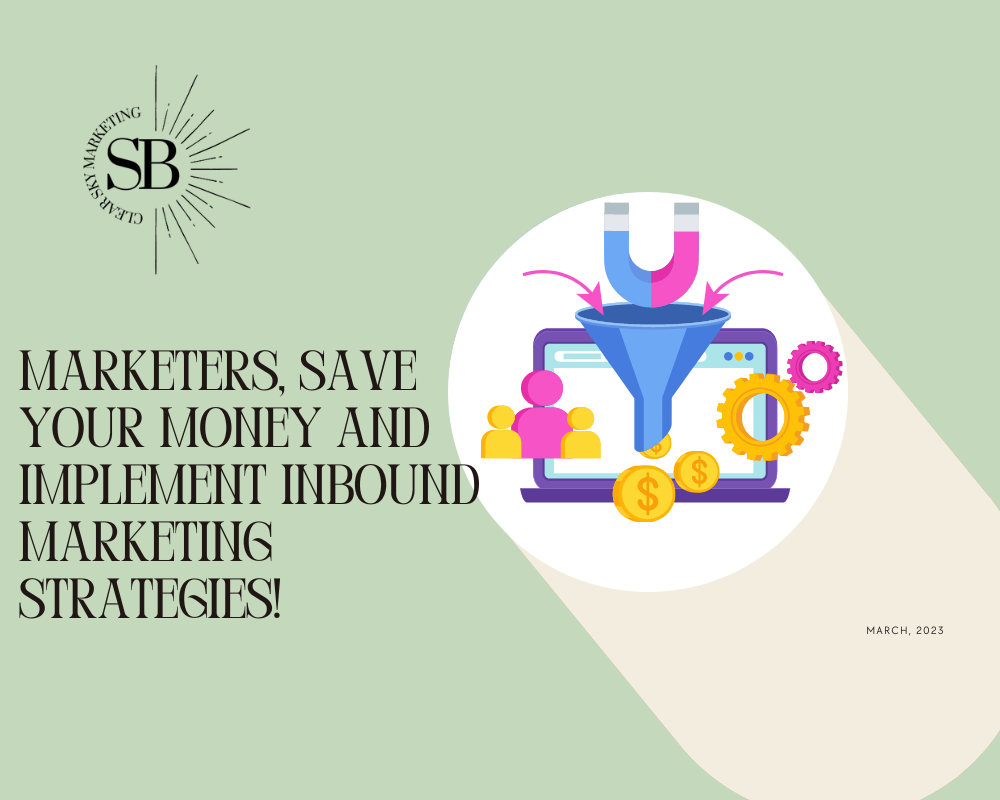What is Inbound Marketing?
They will say it once and they will say it again, your customer is the most important! And that is what inbound marketing is all about… utilizing methodologies that bring in customers by creating valuable and tailored content they need. Inbound marketing forms connections your audience is looking for and solves problems they already have. One of the key elements of a successful inbound marketing strategy is knowing your customer, which can be achieved by creating buyer personas. Buyer personas represent desired customers to give marketers clear direction as to whom they are marketing to. It is pertinent to correctly define buyer personas as inbound marketing will not be effective if desired markets are not being reached. Buyer personas define customers’ problems and how you can solve them. Among the topic of inbound marketing, it is also necessary to define outbound marketing, which refers to any paid marketing while inbound refers to free methods. You may be wondering, why would I pay for marketing when I don’t have to? Outbound marketing is necessary to introduce new products “to start the conversation” and get them in the marketing funnel, while inbound marketing provides helpful information to move them through the funnel and keep them coming back!

Sure it’s Free, But Does it Work?
The effectiveness of inbound marketing stems from its customer-centric principles, inbound marketing works to provide customers with solutions to their problems. Tailoring these answers to the needs of consumers forms a relationship between the desired audience and the company, lowering churn rates and increasing customer retention. Inbound marketing also works to draw in the “right people” as inbound marketing content creation is representative of the businesses’ buyer personas therefore, in theory, it should not reach individuals who have no interest in the product.

Aside from creating buyer personas, Search Engine Optimization (SEO) is another strategy pertinent to effective inbound marketing. SEO promotes customer engagement as it boosts their site’s search engine rankings and drives traffic, improving the company’s reach and the accessibility of consumer-desired solutions. Customers also want control, consumers oftentimes know when they are being marketed to and these efforts can even be misinterpreted as spam. Inbound places the power back into the hands of the consumer as they choose what is being “marketed” to them. Decreasing the costs of outbound marketing and increasing the use of inbound marketing lowers customer acquisition costs and in turn, increases Return on Investment (ROI).
The Importance of Getting to Know Your Customer

Buyer personas are an important theme throughout this article, and there is a reason for it! Creating buyer personas provides marketers with an outlet to accurately define a desired consumer, allowing marketers to delight them individually, resulting in a meaningful relationship between the business and consumer. When a consumer feels cared about, they’ll remain a loyal customer. If marketers do not actually know their desired customers, inbound marketing will not be effective. Marketers could be providing the wrong solutions to the right customers or the right solutions to the wrong customers, both routes do not lead to the benefits associated with inbound marketing. Marketers must utilize market research and web analytics as directions to ensure the wrong “route” isn’t taken.
Content Marketing in Action
Content marketing focuses on creating and distributing valuable content to attract and retain a defined audience” to increase conversions. The success of inbound marketing and content marketing both depend on the extent to which a marketer knows their audience. Inbound marketing focuses on providing consumers with relevant and useful content, and content marketing focuses on creating that relevant and useful content.

When I think of successful content marketing the first company I think of is Spotify and the introduction of its “Spotify Wrapped” marketing campaign that was first released in 2016, which is a series of curated content for individual users based on their activity on the platform throughout the year. In 2022 Spotify saw a 17% increase in total engagements and potential impressions among many other impressive accomplishments as a result of the campaign. The virality of Spotify Wrapped stems from Spotify’s ability to utilize data to create valuable content that is personalized for each consumer, and they wouldn’t be able to accomplish this mighty goal if they didn’t know their users! Follow the suite of Spotify and create valuable and unique content by implementing inbound and content marketing strategies.

